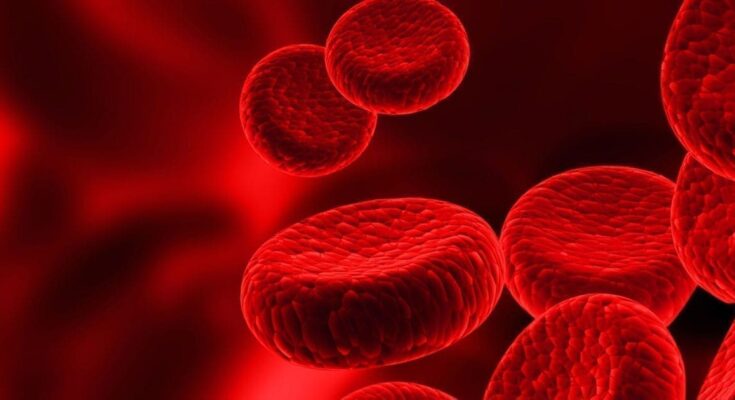Progeria Treatment: Progeria, also known as Hutchinson-Gilford Progeria Syndrome (HGPS), is a rare genetic condition marked by an accelerated aging process in children.
Understanding the complexities of progeria is crucial for early diagnosis and effective management of the condition.
This comprehensive guide delves into the critical aspects of diagnosing and treating progeria, providing valuable insights for healthcare professionals and families alike.
Understanding Progeria
Progeria, also known as Hutchinson-Gilford Progeria Syndrome (HGPS), is a rare genetic condition characterized by accelerated aging in children. Understanding the key characteristics and symptoms of Progeria can aid in early detection and management of the condition. Here, we provide an overview of its primary features and the symptoms commonly associated with Progeria.
Key Characteristics of Progeria
- Genetic Basis: Progeria is caused by a mutation in the LMNA gene, which affects the production of the lamin A protein, crucial for maintaining the structural integrity of the nucleus in cells.
- Rare Occurrence: This condition is extremely rare, affecting approximately 1 in 4 million newborns worldwide.
- Accelerated Aging: Children with Progeria show signs of aging at a very young age. Despite being genetically programmed to age rapidly, their intellectual development remains normal.
- Short Lifespan: The lifespan of individuals with Progeria is significantly shortened, with most living into their mid-teens to early twenties.
Symptoms of Progeria
- Growth Delay: One of the first noticeable symptoms of Progeria is a failure to thrive in infancy, with affected children showing slowed growth and lower weight and height for their age.
- Distinctive Facial Features: Children with Progeria often have unique facial characteristics, such as a smaller face, a pinched nose, thin lips, and large eyes.
- Hair Loss: Alopecia, or hair loss, including eyelashes and eyebrows, is commonly observed.
- Skin Aging: The skin of Progeria patients typically appears thin, wrinkled, and aged beyond their years.
- Musculoskeletal Degeneration: There is often loss of body fat and muscle, along with joint stiffness and hip dislocations.
- Cardiovascular Issues: Heart disease is a major concern, as children with Progeria are prone to developing conditions typically seen in much older adults, such as atherosclerosis.
However, understanding these characteristics and symptoms is essential for healthcare providers and families to recognize Progeria early in a child’s life, enabling timely intervention and support.
Diagnosis of Progeria
Diagnosing Progeria involves several specific tests and criteria:
- Genetic Testing: The most definitive test for Progeria is a genetic test to identify mutations in the LMNA gene. This mutation is responsible for producing an abnormal protein, progerin, which leads to the symptoms of Progeria.
- Clinical Evaluation: Doctors conduct a thorough clinical evaluation to observe physical symptoms such as growth delays, aged-looking skin, loss of body fat and hair, and stiffness in joints.
- X-rays and Imaging Studies: X-rays of the bones, particularly the hands and clavicles, can show signs of delayed bone age and abnormal development, which are characteristic of Progeria.
- Laboratory Tests: Blood tests may be conducted to rule out other conditions and to assess the overall health of the child.
Challenges in Diagnosing Progeria
Diagnosing Progeria presents several challenges:
- Rarity of the Condition: Progeria is an extremely rare condition, affecting approximately 1 in 20 million people, which means many healthcare professionals may never encounter it in their practice.
- Early Symptoms: The early symptoms of Progeria, such as growth delays and skin changes, can be subtle and easily mistaken for other more common conditions.
- Limited Awareness: There is limited awareness and knowledge about Progeria among both the public and healthcare professionals, leading to potential delays in diagnosis.
- Need for Specialized Testing: Genetic testing, which is crucial for a definitive diagnosis, may not be readily available in all healthcare settings.
Role of Healthcare Professionals in Diagnosis
Healthcare professionals play a crucial role in diagnosing Progeria:
- Pediatricians: Pediatricians are often the first to notice the early signs of Progeria during routine check-ups. Their role in monitoring growth and development is essential for early detection.
- Geneticists: Geneticists conduct and interpret genetic tests to confirm the diagnosis of Progeria. They provide detailed information about the genetic mutation and its implications.
- Dermatologists: Given the skin-related symptoms, dermatologists may be involved in identifying the characteristic skin changes associated with Progeria.
- Radiologists: Radiologists play a key role by interpreting imaging studies that can reveal the bone abnormalities indicative of Progeria.
- Multidisciplinary Teams: A multidisciplinary approach involving various specialists ensures comprehensive care and accurate diagnosis, enhancing the quality of life for patients with Progeria.
By understanding these diagnostic tests, challenges, and the roles of healthcare professionals, early and accurate diagnosis of Progeria can be achieved, leading to better management and support for affected individuals and their families.
Current Treatments for Progeria
While there is no cure for progeria, several treatment options are available that can help manage symptoms and improve quality of life.
List of Available Treatment Options
- Lonafarnib: This medication is a farnesyltransferase inhibitor that has shown promise in clinical trials. It helps by improving cardiovascular health and potentially increasing life expectancy.
- Growth Hormone Therapy: Administering growth hormones can help in promoting growth and increasing height in children with progeria.
- Physical Therapy: Regular physical therapy can help maintain mobility, improve joint function, and reduce stiffness.
- Nutritional Support: A balanced diet and nutritional supplements are crucial for maintaining health and supporting overall well-being.
- Cardiovascular Drugs: Medications such as statins, anticoagulants, and antihypertensive drugs can help manage cardiovascular symptoms, which are common in progeria.
- Dental Care: Regular dental check-ups and treatments are necessary due to the increased risk of dental issues in children with progeria.
- Psychological Support: Counseling and support groups can help children and their families cope with the emotional challenges of progeria.
Impact of Treatment on Life Expectancy and Quality of Life
While treatments cannot cure progeria, they can significantly improve the quality of life and potentially extend life expectancy.
- Lonafarnib: Clinical studies have shown that lonafarnib can extend life expectancy by an average of 1.6 years. It also improves arterial stiffness and bone structure, contributing to better overall health.
- Growth Hormone Therapy: This treatment can aid in improving growth rates, leading to better physical development and enhanced self-esteem.
- Physical Therapy: Regular exercise and physical activity help maintain joint flexibility and muscle strength, reducing the risk of immobility and enhancing daily functioning.
- Nutritional Support: Proper nutrition helps in managing weight and boosting energy levels, which is essential for the overall growth and health of children with progeria.
- Cardiovascular Drugs: Managing cardiovascular symptoms effectively can reduce the risk of heart attacks and strokes, which are common complications in progeria patients.
- Dental Care: Regular dental treatments prevent oral health problems, improving comfort and the ability to eat properly.
- Psychological Support: Emotional and psychological support can greatly enhance the mental well-being of children and their families, helping them to lead fuller, happier lives.
However, while progeria remains a challenging condition with no definitive cure, the available treatments can provide significant benefits.
Supportive Care and Management of Progeria
Importance of Multidisciplinary Care
Effective management of progeria requires a comprehensive approach involving a multidisciplinary team. This team typically includes pediatricians, cardiologists, dermatologists, nutritionists, and physical therapists. Coordinated care ensures that all aspects of the child’s health are monitored and managed, improving overall quality of life.
Managing Complications
Progeria often leads to various health complications, including cardiovascular issues, joint stiffness, and skin abnormalities. Regular monitoring and timely interventions are crucial in managing these complications. Treatments may involve medications for heart health, physical therapy for joint mobility, and specialized skincare routines.
Nutritional Considerations and Physical Therapy
Proper nutrition is essential for supporting growth and maintaining energy levels in children with progeria. A nutritionist can provide tailored dietary plans to meet the unique needs of each patient. Additionally, physical therapy plays a vital role in maintaining muscle strength and joint flexibility, helping to preserve mobility and independence.
Psychological Support for Patients and Families
Living with progeria can be emotionally challenging for both patients and their families. Psychological support, including counseling and support groups, is crucial for addressing the mental and emotional well-being of everyone involved. These resources provide coping strategies, foster a supportive community, and enhance overall quality of life.
By focusing on these key areas, supportive care and management can significantly improve the well-being of children with progeria, helping them lead fulfilling lives despite the challenges of the condition.
The Future of Progeria Treatment
Ongoing Research and Clinical Trials
Research into progeria, a rare genetic disorder, is advancing rapidly. Scientists are actively exploring new avenues to better understand the disease and develop effective treatments. Ongoing clinical trials are crucial, providing valuable data that brings us closer to potential cures. Cutting-edge studies focus on novel drugs and therapies aimed at alleviating symptoms and extending the lifespan of those affected.
Potential Gene Therapy and Its Implications
One of the most promising areas of research is gene therapy. By targeting the genetic root of progeria, this innovative approach aims to correct the defective gene responsible for the disorder. Early trials have shown encouraging results, suggesting that gene therapy could significantly improve the quality of life for patients. The implications are vast, offering hope for a future where progeria can be effectively managed or even cured.
Collaboration in the Medical Community and Patient Advocacy Groups
The fight against progeria is a collective effort. Collaboration among researchers, medical professionals, and patient advocacy groups is essential. These partnerships facilitate the sharing of knowledge, resources, and support, accelerating progress in treatment development. Patient advocacy groups play a pivotal role, raising awareness, funding research, and providing a voice for those affected by the condition. Together, these efforts are paving the way for a brighter future for progeria patients.
FAQs about Progeria Treatment
What is Progeria?
Progeria, also known as Hutchinson-Gilford Progeria Syndrome (HGPS), is a rare genetic disorder that causes rapid aging in children. It typically becomes noticeable within the first two years of life.
What are the Symptoms of Progeria?
Children with Progeria display symptoms such as growth failure, loss of body fat and hair, aged-looking skin, stiffness of joints, hip dislocation, and cardiovascular disease. Despite these symptoms, their intellectual development remains unaffected.
Is There a Cure for Progeria?
Currently, there is no cure for Progeria. However, research is ongoing, and significant progress has been made in understanding the disease. Treatments focus on managing symptoms and improving quality of life.
What Treatments are Available for Progeria?
Treatments for Progeria include medications like Lonafarnib, a farnesyltransferase inhibitor, which has shown promise in improving certain symptoms. Physical therapy, occupational therapy, and heart health management are also crucial in managing the condition.
How Does Lonafarnib Help in Progeria Treatment?
Lonafarnib helps by inhibiting the build-up of defective protein in the cells of children with Progeria. Studies have shown that Lonafarnib can improve cardiovascular health and extend the lifespan of children with the condition.
Are There Any Ongoing Research or Clinical Trials for Progeria?
Yes, several clinical trials and research studies are underway to explore new treatments and drugs. The Progeria Research Foundation is a key organization supporting and funding this research.
How Can I Support Progeria Research?
Supporting Progeria research can be done through donations, participating in awareness campaigns, or volunteering with organizations dedicated to finding a cure. Every effort helps bring us closer to better treatments and, eventually, a cure.
Where Can I Find More Information About Progeria?
For more information, you can visit the Progeria Research Foundation’s website or consult healthcare professionals specializing in genetic disorders.
Conclusion
Diagnosing and effectively treating Progeria is crucial for improving the quality of life and longevity of affected children. Early diagnosis can lead to better management of symptoms and a more comprehensive care plan, significantly impacting the patient’s overall health.
Ongoing research is vital, offering hope for future advancements that could one day lead to a cure. Continued support and funding for Progeria research are essential to unlock new treatment possibilities and bring us closer to ending this rare disease. Together, we can strive for a future where Progeria is no longer a life-limiting condition.
References
Citing reputable sources is essential for further reading and validation of the information provided in our article on Progeria treatment. Below are some highly respected resources that offer in-depth insights and current research findings on this rare genetic disorder.
National Organization for Rare Disorders (NORD): NORD provides comprehensive information on Progeria, including symptoms, causes, and current treatments. For more details, visit NORD Progeria Information.
Progeria Research Foundation (PRF): The PRF is dedicated to finding treatments and a cure for Progeria. Their website includes research updates, clinical trial information, and patient resources. Explore more at Progeria Research Foundation.
Genetics Home Reference – NIH: A resource from the National Institutes of Health, providing detailed information about the genetic aspects of Progeria. Read more at NIH Genetics Home Reference.
Mayo Clinic: Mayo Clinic offers a thorough overview of Progeria, including symptoms, causes, and treatment options. For a deeper understanding, visit Mayo Clinic Progeria Overview.
These references will help validate the information provided and offer additional perspectives on the treatment and management of Progeria.



